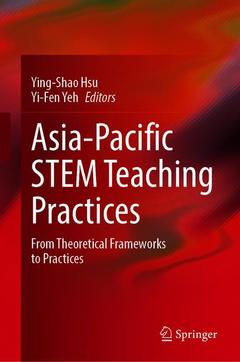Description
Asia-Pacific STEM Teaching Practices, 1st ed. 2019
From Theoretical Frameworks to Practices
Coordinators: Hsu Ying-Shao, Yeh Yi-Fen
Language: English
Subjects for Asia-Pacific STEM Teaching Practices:
Publication date: 11-2019
Support: Print on demand
Publication date: 11-2020
213 p. · 15.5x23.5 cm · Paperback
Description
/li>Contents
/li>Biography
/li>Comment
/li>
Chap. 1 Opportunities and Challenges of STEM Education.-
Chap. 2 The Formulation of STEM Education in Standards, Curriculum Guidelines/Frameworks ~ A Cross-cultural Comparison Study.-
Part II Teachers' practical knowledge for STEM teaching.-
Chap. 3 A Framework for Examining Teachers' Practical Knowledge for STEM Teaching.-
Chap. 4 Instructional Knowledge of STEM: The Voices of STEM Teachers in Taiwan.-
Chap. 5 Teachers' Conceptions about STEM and Their Practical Knowledge for STEM Teaching in Hong Kong.-
Part III STEM Teaching Practices.-
Chap. 6 Opportunities and Challenges of STEM Dducation in HK Primary/Secondary Schools.-
Chap. 7 Teaching Engineering-Focused STEM Curriculum: PCK Needed for Teachers.-
Chap. 8 Authenticity in STEM Learning with Open-source Sensors.-
Chap. 9 Changing teacher perceptions and practices in STEM through professional learning.-
Chap. 10 Potential and Challenges in Integrating Science and Mathematics through Real-world Tasks in the Classroom.-
Part IV Assessment of STEM Learning.-
Chap. 11 Framing and Assessing Scientific Inquiry Practices.-
Chap. 12 Challenges in Assessing Students’ Learning Performances through STEM Reforms and Innovations in Taiwan.-
Part V Epilogue.-
Chap. 13 Epilogue.
Discusses STEM teaching practices from international perspectives and demonstrates the implementation of theory into practice
Unveils how researchers in the Asia-Pacific Region planned and provided STEM education in classroom contexts
Clarifies what should be included in the assessment of STEM learning and how to frame and design assessment tools




